DAENNOSI BLOOD AFFINITIES

Table of Contents
1.1 Introduction
1.2 Dance of Knives
1.3 Instinct
1.4 Luck
1.5 Magic
1.5.1 Evil Eye
1.5.2 the Sight
1.5.2.1 Greater Auguries
1.5.2.2 Lesser Auguries
1.5.3 Mediumship
1.5.4 Draba
1.5.4.1 Power Level One
1.5.4.2 Power Level Two
1.5.4.3 Power Level Three
1.5.4.4 Power Level Four
1.5.4.5 Power Level Five
1.6 Truth of the Daennos
1.7 Zapaderin
Sources
1.1 Introduction
When using Blood Affinities, Daennos roll Blood Purity + (Talent Rating) to determine success. During character creation, Daennos receive 3 points to spend on Blood Affinities. After character creation, these special abilities may only increase with experience and Storyteller permission.
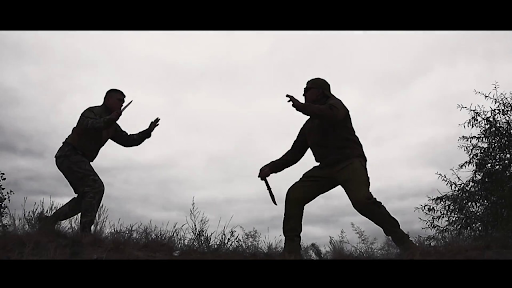
1.2 Dance of Knives
The ancient art of fighting from the soul, you move your body to the rhythm of the Blood, your knives extensions of the self. When performing the dance you move at speeds beyond your normal capabilities., becoming a lethal whirlwind. This skill combines the beauty of dance with the violence of combat. Daennos fall into a trance-like state using their knives and feet in hand-to-hand or throwing the knives.
The character’s rating in this skill equals the number of attacks possible in a turn, so a character with a rating of three could attack as many as three times in a single turn. A character with only one point in Dance of Knives attacks normally, with the first point merely representing the initial learning of the movements. Due to the difficulty of the Dance of Knives, a character’s rating in this skill may never exceed their Blood Purity.
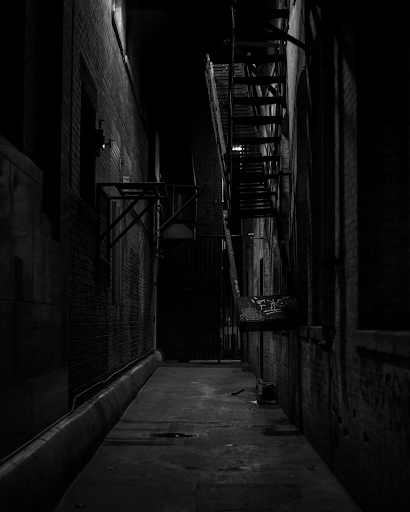
1.3 Instinct
You have an innate sense about danger, when to look over your shoulder etc. or when you get a bad feeling about someone but it doesn’t seem important at the time only to be critical later on. Characters with this Blood Affinity add their instinct rating to any rolls regarding the character’s personal safety. The storyteller may even roll the character’s instinct dice for them where strong danger exists but the character has no way to detect it. In such cases, Instinct + Perception should be rolled (difficulty of 8). If the roll is successful the character should get a bad feeling about the situation. However if the roll is botched the storyteller should give the character some misleading information (botches work much better when the Storyteller makes the instinct roll). This Blood Affinity only works for the character themself and only works when they are in personal danger.
● Novice: You generally have an umbrella with you when it rains.
●● Practised: You never get cold-cocked in a fight.
●●● Competent: Good private eye material.
●●●● Expert: You never answer the phone when a creditor calls.
●●●●● Master: Jungle predators could learn from you.
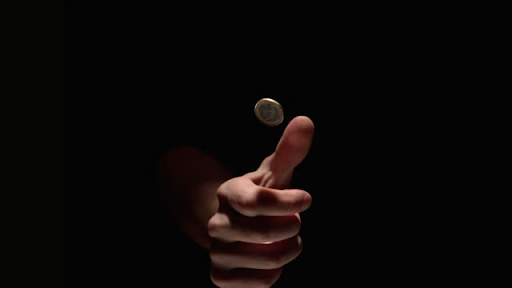
1.4 Luck
You’ve always managed to escape a bad situation by the skin of your teeth, thanks to Lady Luck. This Blood Affinity allows the character to add an extra die or two to a dice pool when they decide things look really bad. However, each luck die can only be used once per day.
● Novice: You find pennies on sidewalks.
●● Practised: You can always find a parking spot.
●●● Competent: You Were kicked off the titanic before it set sail..
●●●● Expert: You’ve been thrown out of a lot of casinos for winning.
●●●●● Master: Compared to you, James Bond is one unlucky guy.
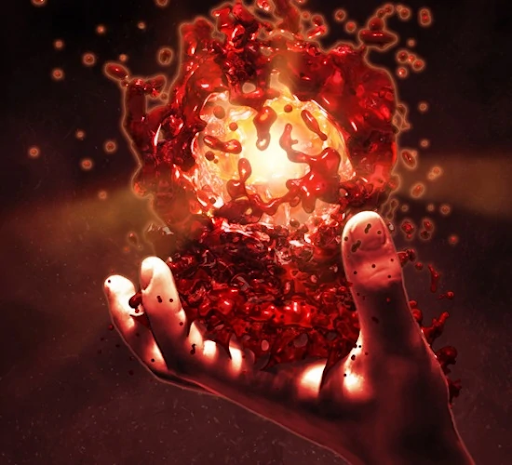
1.5 Magic
There are four types of magic particular to the Daennos. Each is a unique Blood Affinity though some powerful mages have more than one type at their disposal. No Daennosi can acquire a magical Blood Affinity level higher than their Blood Purity rating.
1.5.1 Evil Eye
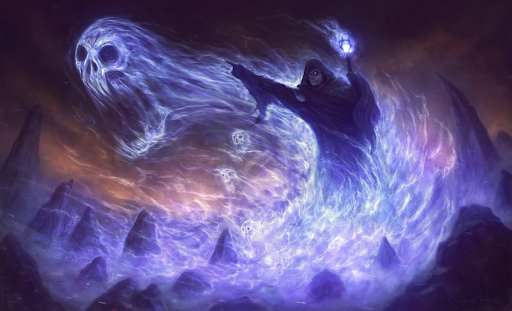
The ability to place or remove a curse upon a victim. Amongst Daennos it is a powerful and respected ability, but also tends to isolate those who wield such power as others, even Daennos tend to be nervous around them. Those who wield the evil eye possess auras of strangeness and fear.
Daennos with the evil eye receive a +1 difficulty modifier to all social rolls involving gaje or other Daennos, but not supernatural entities. This difficulty modifier is in addition to any other modifications the character may have due to their blood purity.
Characters attempting to use the Evil Eye should state what it is they wish to happen to their intended target. The effects of the Evil Eye can vary but should include consequences such as automatic botches, the storyteller removing dice from the character’s rolls, or temporary negative modifiers etc. The downside to using the Evil Eye is that a botch in casting it will reflect the curse back on the character themselves.
Character’s using Evil Eye must make an Evil Eye + Manipulation roll (difficulty of the target’s willpower + 2). As indicated below, the number of successes rolled when using Evil Eye determines both the intensity and duration of a curse. A character who uses Evil Eye may remove a curse at any time (unless they are the one affected).
One Success
The curse affects the victim for one week. The victim is mildly affected (ie. they lose one die on some skill rolls, gain small negative modifiers or botch a roll etc.).
Two Successes
The curse affects the victim for one month. they might lose one die on ten different skill rolls, receive three automatic botches etc.
Three Successes
The curse affects the victim for six months. they might lose one to two dice on half their skill rolls, receive a severe disease or injury etc.
Four Successes
The curse affects the victim for one year; they might lose two to three dice on half their skill rolls, receive a severe disease or injury, get a dozen automatic botches etc.
Five Successes
The curse affects the victim indefinitely; The effects of the evil eye are similar to four successes but are permanent unless removed by magical or miraculous means.
The effects of the evil Eye may be warded off through the use of a piece of draba designed specifically for that purpose, with the strength of the draba negating that number of Evil Eye successes. However, once the draba has been overcome by the Daennosi casting the Evil Eye, it is rendered useless.
The Evil Eye may only be reversed by the one who cast it or another Daennosi skilled in the ability. The one who cast it can automatically remove the curse but any other Daennosi attempting to remove it must make an Evil Eye + Charisma roll (difficulty of 3 + the number of cursing successes originally achieved in casting it). The player must subtract the number of successes the Daennosi attempting to reverse the process receives (if any) from the number of original successes. The resulting difference determines the remaining strength of the curse, if it has not been completely removed.
Any Daennosi attempting to remove an Evil Eye curse can only make one attempt to remove it. If the Daennosi botches their roll they must perform a second test. Any successes on the second test actually increase the severity of the curse by that many successes.
1.5.2 The Sight
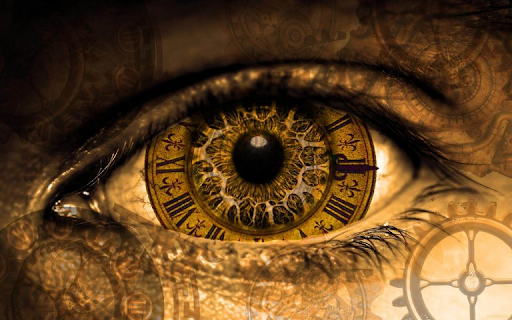
Daennos with the Sight can gain insights into the recent past and possible futures, but they can never fully control this affinity. Using it requires intense concentration in a relaxed state. Those gifted with the sight typically favour one or two methods or dukkerin, such as tarot cards or dice etc. greatly valuing their tools, which are often wrapped in silk. No one else may touch these tools for fear of making them marhime (impure), tainting the truth of the visions they might see.
The player must choose one major method of using the Sight or two minor methods of such divination. Alternatively, they can create a new method if the storyteller approves. If a character is forced to use a dukkerin method they are not familiar with, for example they have lost their divination tools, then the difficulty level of using the Sight is increased by +2.
The information the character is seeking should be explicitly stated for the storyteller to interpret an appropriate response. It could be anything from the inquiry about the health of an individual to the specific possible ramifications of a certain action.
The base difficulty level when using the Sight is 8. The more specific and complex the information sought is, the higher the difficulty will increase, Be sure to confer with the storyteller for an appropriate difficulty level on what you are trying to See. The clarity of visions from the Sight depends on the number of successes a character gains. For every success gained, they receive one specific image or impression (ie. a single piece of information).
Storyteller Note
Make sure the information given on a success is useful to the situation but cryptic in nature. This is especially true for information relating to the future. Information should always be vague and general initially, growing more specific and useful with each success.
A character may only attempt to learn information about a person, object or event once. Regardless of how much success (or lack thereof) they have in the attempt. They may only attempt to use the Sight again regarding the same subject unless they have new insights to focus upon. The higher their skill in the Sight, the further into the past or future a character can look. Every use of the Sight costs one point of willpower.
| ● | Novice: They can see up to a month in the past or two weeks into the future. |
| ●● | Practised: They can see up to a year in the past or six months into the future. |
| ●●● | Competent: They can see up to ten years in the past or five years into the future. |
| ●●●● | Expert: They can see up to a century in the past or half a century into the future. |
| ●●●●● | Master: They can see any point in the past or future, however the difficulty beyond two centuries in the past or a century into the future increases the difficulty by 10. |
1.5.2.1 Greater Auguries
These are the most common forms of scrying with the Sight, none has an advantage over the other and the player may only choose one. Greater augury or two lesser auguries. Greater Auguries are the most adaptable forms of scrying.
Crystal Gazing
Whether it’s a crystal ball, a mirror or a black bowl filled with water - dim lights are preferably, ideally one candle placed so as not to create a reflection on the object’s surface. The Daennos lets the subject float on their mind until a vision surfaces.
Tarot Cards
There are many types of tarot cards, though Daennos often prefer to create their own decks. The various symbols and pictures tell a story laid out in specific patterns with multiple interpretations. A Daennos eyes will be drawn to certain parts of these cards that guide their understanding.
Tea Leaves
A Daennosi that uses tea leaves often has a favoured set and draws a bitter draught called a meski, the person in need of the sight then drinks the brew, whether it is the person with the Sight or someone who has come to them for help. Once the tea has been fully consumed, the seer takes the cup and stares into its depths. The tea leaves for patterns as the seer (and the client) concentrate on the question or problem at hand. Slowly the Daennosi will recognise images in the tea leaves and their Sight will interpret the meaning of the symbols.
1.5.2.2 Lesser Auguries
Lesser auguries tend to be more specialised towards a certain type of knowledge. Characters gain a -2 difficulty modifier when scrying for knowledge within their lesser augury’s specialty area. Although it is possible to gain knowledge of any type with lesser auguries, it is very hard to do so outside of the specific area their method is tailored for, with a +2 modifier to the difficulty level with regards to any other type of knowledge.
The player may only choose one. Greater augury or two lesser auguries. Clever players will use both their lesser auguries to maximise the knowledge they are scrying for, however they must be careful to concentrate on the subject from two entirely different angles or else their vision will be blocked. Below are a few of the specialised lesser auguries, players can also create new ones with their own specialisations with the permission of a storyteller.
Casting
Scrying via runes, dice, sticks, stones or other material - the seer studies the pattern of the toss. The Blood guides the seer in interpreting the cast. Many Daennos carry dice or dominos for such use, with for gaje marks or fellow Daennos.
Specialties: Knowledge of accidents, unexpected actions and acts of fate.
Dazing
Bright strobes, neon lights, or the overpowering blare of driving music are used as mediums for this type of scrying. At a minimum the seer must steadily stare at bright, flashing lights for several minutes. As the light and after-images flash across their eyes, the mind’s eye imprints a vision. This is a common practice within the Knives Tribe.
Specialties: Death Knowledge.
Fire Reading
Hypnotic flames of Daennosi campfires have long been used for this method of scrying. They sit by an open fire, sometimes tossing small handfuls of salt into the flames as it dies down. Images dance within the flames and smoke, it is a form of scrying particularly favoured by the lupine clan.
Specialties: Knowledge regarding matters of love and hate.
Hand Reading
Also known as palmistry, it however entails use of the whole hand, not just the palm. Every line and callous tell a story to the seer as they ask the subject a multitude of questions over the course of the reading.
Specialties: This lesser augury may only be used in relation to events affecting the person whose hand is being read, or their ancestors and descendants. Any sort of knowledge about them can be determined however the seer receives a +2 difficulty modifier when scrying for information about the subject’s ancestors or descendants.
Knives and Needles
The knife or needle is suspended from a piece of string or thread and allowed to hang free. A piece of paper with a few simple answers on it or a map, is placed beneath the instrument. The seed then places one finger lightly on top of the apparatus and concentrates on the desired information. If the seer is successful the instrument will start moving back and forward in the direction of the correct answer or area on a map. It is common for city Daennos to have a needle piercing their body that they remove and use for this form of scrying.
Specialties: Knowledge regarding where and when things or people are in space and time.
Thrashing
The frenetic energy and release of dance in this scrying form is frequently accompanied by alcohol or drugs, but not always. Just as the body reaches its limits in this passionate movement, they are violently besieged by images and symbols. The seers often lose consciousness immediately after and do not remember their visions upon awakening, thus it is important for them to be recorded either electronically or by witnesses.
Specialties: Knowledge of pain or conflict.
1.5.3 Mediumship

The ability to contact the spirit world. Daennos midwives recognise those with this rare gift immediately, as they are en caul births, otherwise known as “veiled births”, born with the embryonic sac still intact, children caught between the world of the living and the dead. These births are incredibly rare, and their caul is typically placed inside an amulet which the medium bears for the rest of their life. When this amulet is used in the creation of a protective piece of draba known as a soul-chain, the amulet protects its bearer from all spiritual attacks.
A character with this affinity may attempt to reach either the Underworld or the spiritual plane to contact the ghosts of the dead by making a Mediumship + Charisma roll. The difficulty level of such a task starts at ten, however if the character has an item that once belonged to the person they are trying to reach in the afterlife or they are in the presence of someone who was close to them, the difficulty drops to nine. If the medium is in the former home of the deceased or their place of death, the difficulty drops to eight. If both of these physical contacts are available, the difficulty drops to seven. Similarly if the medium is in a place where the veil between the spiritual world (or Underworld) and the living world is particularly thin (such as a cairn, nihil or node etc.) the difficulty of the attempt is reduced by two.
If the medium has a fetter of the wraith they are trying to contact, the difficulty is further reduced by one for each fetter used. Note that botches on this roll can be truly devastating, for who knows what might arise from the Underworld. Maintaining contact with the spirit world is a very difficult task. For every success a medium achieves, they may commune with the spirit for one minute. This time period may be doubled if the medium expends another point of willpower in the effort.
A medium may also attempt to banish a ghost or spirit from a building or area it is haunting. For such attempts the medium makes a sustained Mediumship + Manipulation roll (difficulty of the ghost’s willpower + 3). A botched attempt here may cause the ghost in question to begin harassing the medium. The medium must make a number of successes equal to twice a ghost’s willpower in order to banish the spirit. Launching such an attack costs the medium one point of Willpower, but they may continue the attack for the duration of the scene (or until the battle is decided).
As a medium’s level of control increases, they may gain one or more spirit contacts. Such spirits are friendly with the medium and will even do brief errands for them. It is up to the Storyteller when such a contact is made but the medium will generally have to do something for the spirit, such as aiding a still-living relative or avenging a ghost’s murder, to achieve contact.
The medium may also send their own spirit into the Underworld (not the astral plane), leaving their body behind in the land of the living. While the medium’s body is vacant it is vulnerable to possession by both spirits and souls of the dead. Certain draba (for example, a soul-chain) may protect the medium’s body during their spirit’s absence, while other talismans may allow the medium to attack spirit-beings and defend themselves in the Underworld. Any draba that affects spirits in the living world may be carried by the medium’s spirit and used in the Underworld.
The length of time a medium may remain separated from their own body depends upon their degree of skill, however they may only journey to the Underworld between sunset and sunrise. If the medium fails to return to their body before sunrise they will be unable to return until, after the next sunset. Very few mediums survive in the Underworld for a full day and night. If the medium’s body is left vacant for more than a day it will slip into a coma. After twelve hours away from their body, a medium must make a Stamina + Mediumship roll (difficulty of 5) to return to their body. The difficulty of this roll increases by one for every twelve additional hours the medium remains away from their body (to a maximum of 10). If the medium remains away from their body for longer than they are capable of (based on mediumship skill), their body will begin to take damage at a rate of one health level per six hours that they remain away. In order to attempt to contact the spirit world, or send their own spirit to the Underworld, the medium must spend one point of Willpower.
● Novice: The medium can remain away from their body for up to six hours at a time before taking damage.
●● Practised: The medium can remain away from their body for up to twelve hours at a time before taking damage.
●●● Competent: The medium can remain away from their body for up to one day at a time before taking damage.
●●●● Expert: The medium can remain away from their body for up to one week at a time before taking damage.
●●●●● Master: The medium can remain away from their body for up to indefinitely, although as always, if their body dies, they do too.
1.5.4 Draba
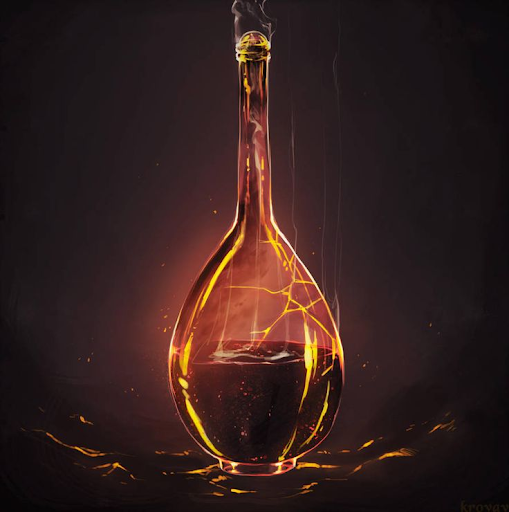
The ability to craft magical devices such as charms, potions and amulets. Such devices only last a short time but can be powerful tools. The range of foci that can be crafted is vast, but each drabarne has their own special creative knowledge. Draba can only be wielded by other Daennos, as they require those of the Blood to fuel their magic (the only exception being Ravnos shilmulo, whilst they have Daennosi blood flowing in their veins after feeding).
The art of creating draba is studied under another accomplished drabarne, whilst they will have their own specialties, it is the foci, the will to create. The specific needs of the creator and the power of their blood that determine the powers of any draba. Normally young drabarne learn how to create specific draba from elder drabarne in their own family. It is much easier for a Daennosi to create a piece of draba if they have already watched the creation of a similar piece of work before, however a Daennosi can create any kind of draba they want, regardless of whether they have seen anything similar fashioned before, even one of their own devising - but creating such a piece is more difficult and will take longer. A character may have one to five dots in the skill of draba corresponding to the five power levels, representing the character’s training in the art of creation. A character can only make foci of their skill level or lower.
When attempting to create a specific piece of draba the character rolls their draba skill + Blood Purity dice (difficulty of 6). If they are attempting to create this item for the first time the difficulty raises to 8. Additionally, they must spend one point of Willpower to fuse their will into a physical form. The number of successes and level of the draba determine the amount of time necessary to create the item. The base time for such a creation is one day per level of the draba (or two days per level if the drabarne has never created the item before). Additionally, every success decreases the amount of time needed by half a day.
Below are various examples of draba that a skilled drabarne can craft, but they are only examples and storytellers and players are encouraged to work together to create new draba using the examples below as guidelines for each power level.
1.5.4.1 Power Level One
Jewellery of Earthly Grounding: This protective working can be placed inside any silver jewellery. However, it is most commonly worked into the form of an earring. Any piece of jewellery so enchanted must contain a small piece of amber, a source of mystical grounding. The jewellery aids the wearer in fending off magical attacks (spells, curses, etc.) directed at the wearer. While wearing the jewellery, the character adds one die to any rolls to resist magical effects. The earring will continue to function for a number of months equal to the creator's skill level multiplied by the number of successes on the creation roll.
Philter of Desire: This sweet mixture affects the imbiber's perceptions and emotions, causing them to fall madly in love with either the next person they see or a specific individual (depending on the wishes of the drabarne). The victim may make a Stamina + Wits roll (difficulty 8) to resist the effects of the draught. The effect of this potion lasts a number of weeks equal to the drabarne's skill level multiplied by the number of successes achieved during creation, minus the victim's successes.
Healing Balm: This ointment, when applied directly to wounds, will heal one wound level per application. The number of applications available equals the number of successes made by the drabarne at the time of creation.
Token of Bedevilment: This charm is placed on a specially created hardware token. The token looks just like any other hardware token, although it does have a faint magical aura surrounding it. When inserted in a computer, the token releases a tiny gremlin into the operating system. The gremlin will cause the computer to operate sluggishly and temperamentally, adding +2 to the difficulty level of any Computer rolls performed by anyone not of the Blood.
Meanwhile the gremlin aids any Daennosi who operates the computer, giving them a -1 to the difficulty level of any Computer roll, including Computer Hacking. The gremlin has a very short attention span and will only remain in the computer for five minutes times the number of the drabarne's successes in creating it, before moving on to more enjoyable activities or escaping through the network altogether.